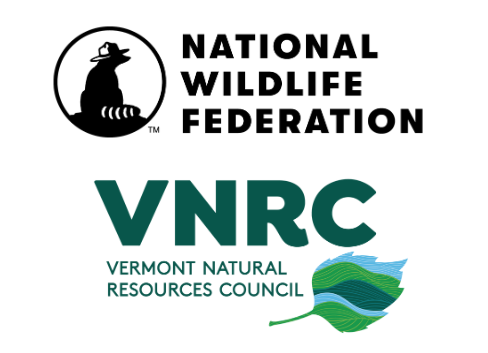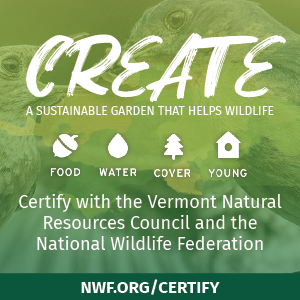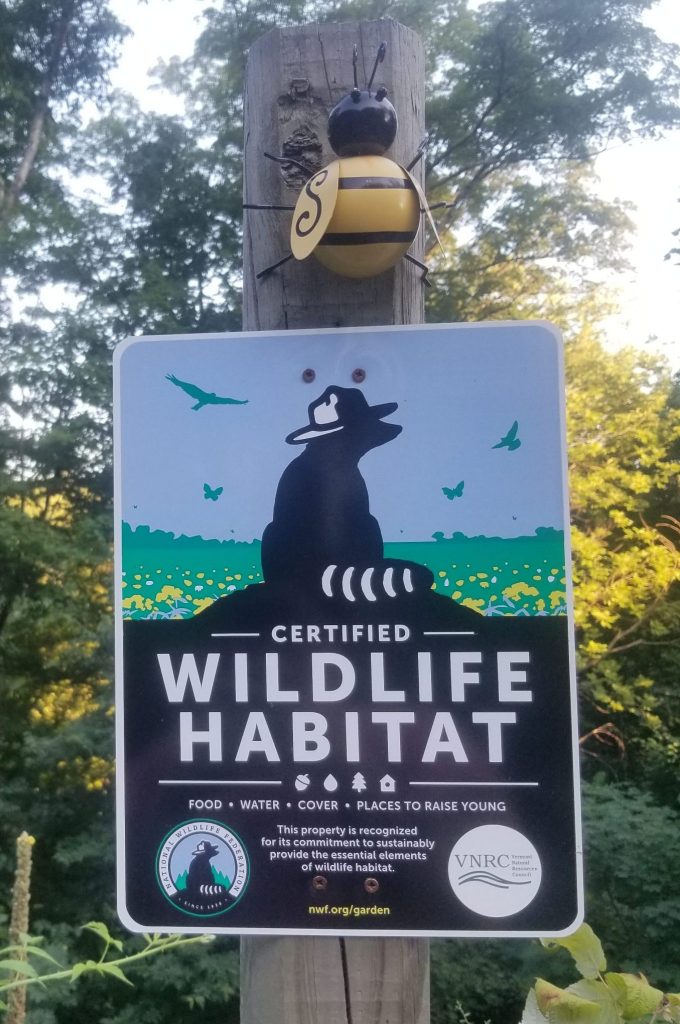
Gardening for wildlife
Through a partnership with the National Wildlife Federation (NWF), the Vermont Natural Resources Council (VNRC) is empowering people to turn their backyards into thriving habitats for birds, butterflies and other wildlife in Vermont.
Tell us how your yard or garden meets five criteria necessary for wildlife: food, water, cover, places for wildlife to raise young, and wildlife-friendly landscaping practices. If it’s eligible, the National Wildlife Federation will recognize it as a Certified Wildlife Habitat®.
Celebrate your commitment to wildlife and certify your yard, balcony garden, schoolyard, work landscape, or even a roadside green space. It is fun, easy, and makes a big difference for neighborhood wildlife!
Get certified
When you certify through this link or download and fill out the paper application, you will receive a joint certification through the National Wildlife Federation and VNRC. Once certified, you can share your accomplishment and commitment to helping wildlife with your whole neighborhood by purchasing and posting an exclusive Certified Wildlife Habitat® sign.
The secure $20 application processing fee and sign purchase directly support the National Wildlife Federation’s programs to protect wildlife and its habitat.
$5 from every certification fee comes back to VNRC, to help us safeguard wildlife habitats in Vermont. Thank you for your support!
Tips for getting started in Vermont
Attracting birds, butterflies and other wildlife is a wonderful way to make a difference right outside your door. It all starts with the things you plant. Find guidance in this brochure from NWF all about building wildlife-friendly gardens. Here are five simple tips to get started:
- Plant a shrub that flowers for pollinators and produces berries for birds and other animals. Audubon Vermont has a handy guide to Vermont-specific bird and pollinator-friendly shrubs.
- Put out a birdbath. Even small water features will be used by wildlife.
- Provide cover with dense shrubs, wildflower gardens, rock walls and evergreens.
- Mount a nesting box for birds, host plants for caterpillars, or install a frog pond as places to raise young. Here are some helpful guidelines from the Vermont Fish and Wildlife Department around keeping feeders clean and safe for birds and other wildlife.
- Put away the chemicals. Natural gardens are better for you and your family as well as for wildlife. (Pro tip: check out the UVM Extension – Master Gardener page to find home horticulture resources for beginners, experts, and everyone in between.)
Together the National Wildlife Federation and VNRC recognize that every habitat garden is a step toward replenishing resources for wildlife locally and along migratory corridors. Thanks for participating in the program!
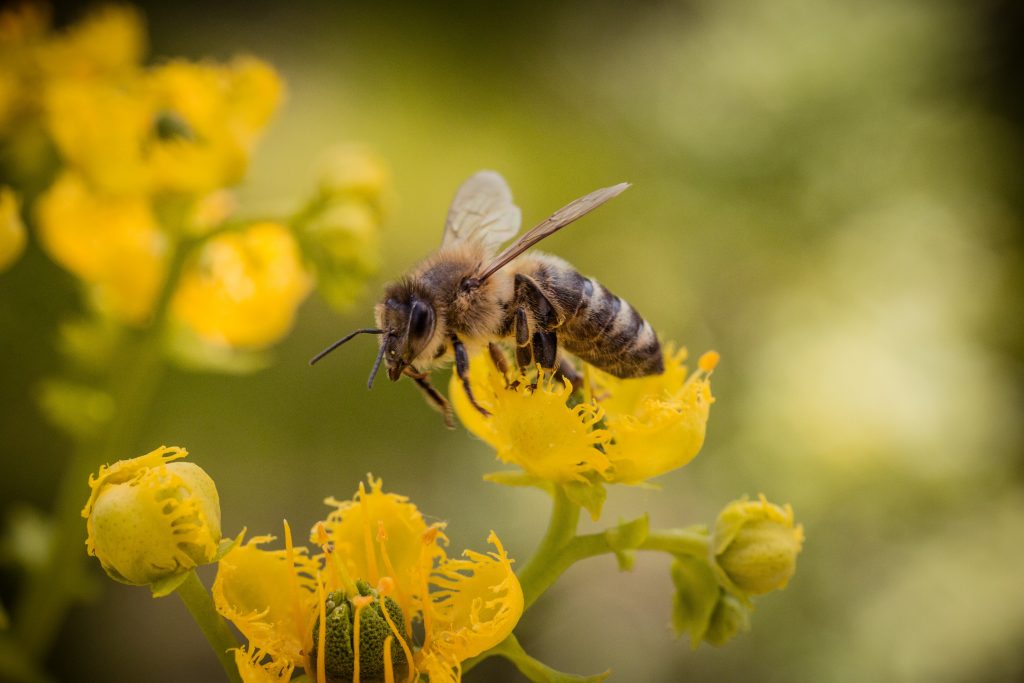
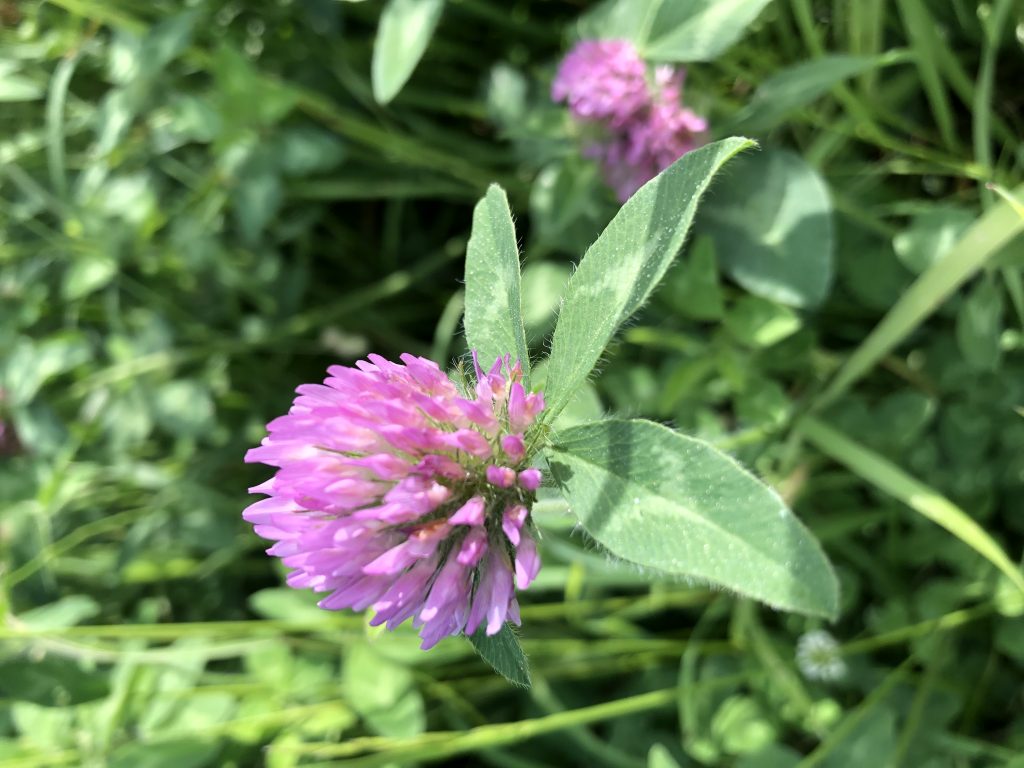
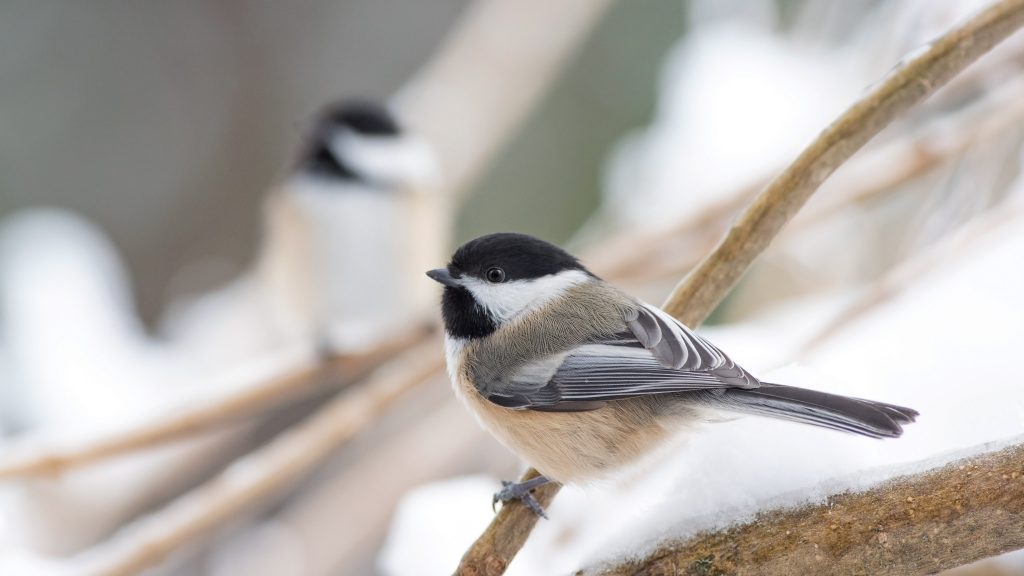
Questions?
Did you certify your space, and would you like to share your story? Please contact Colin Keegan at ckeegan@vnrc.org.
Special thanks to the National Wildlife Federation for making this work possible. For questions about getting your certification, please contact Erin Sweeney, NWF Garden for Wildlife Manager at sweeneye@nwf.org.
